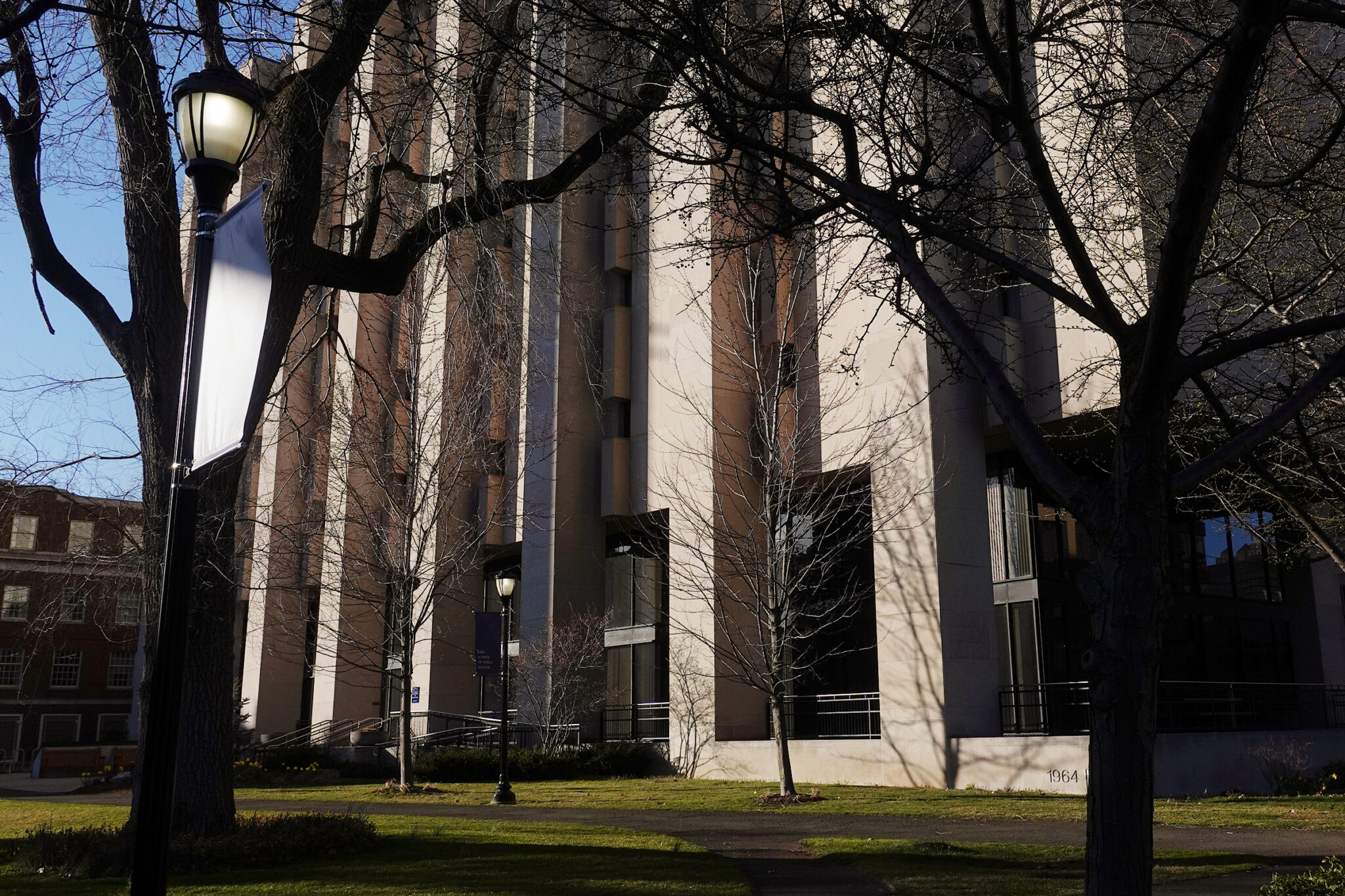Yale study finds increase in asthma-related emergency room visits in New York City due to Canadian wildfire smoke
Researchers involved in the study spoke with the News about how they used New York City’s syndromic surveillance system to determine how many asthma-related emergency room visits occurred as the smoke wave rolled through the city.

Tim Tai, Senior Photographer
A recent study conducted by researchers at the Yale School of Public Health found a significant rise in asthma-related emergency room visits as a smoke wave rolled through New York City from the Canadian wildfires in June.
According to Daniel Carrion, an assistant professor of epidemiology at the School of Public Health who was not affiliated with the study, the link between asthmatic patients and air quality found in the study is an important example of how climate change and pollution can directly impact human health.
“This work is both important and unsurprising,” Carrion wrote in an email to the News. “Long-standing research shows that air pollution causes asthmatic exacerbations and mounting research shows that wildfire incidence is increasing with climate change. This timely study helps to highlight that poor air quality days from distant wildfires aren’t simply a nuisance, but they result in real-world health impacts.”
The study was led by Kai Chen, a professor of epidemiology at the School of Public Health and the Director of Research at the Yale Center on Climate Change, alongside Yiqun Ma GRD ’25, a doctoral student studying environmental health science at the School of Public Health and Michelle Bell, a professor of environmental health.
When the wildfire smoke covered cities including New Haven and New York in early June, Chen said he was immediately interested in studying its potential health effects. He told the News that the images of New York’s orange sky reminded him of the pollution he often saw in Nanjing while completing his doctorate, sparking his interest in further analyzing the pollution’s direct health effects.
“Among the air pollutants, one particular pollutant is called fine particulate matter [PM2.5]…” Chen said. “We have learned that these smaller particles can penetrate into the blood system and generate impacts on the cardiovascular system, respiratory illness, and many other health organ systems.”
Chen said that researchers have found that PM2.5 is a major concern when it comes to wildfire polution. This worry, Chen said, led researchers to the “natural question” of what the smoke waves’ immediate health impacts looked like.
To determine how many emergency department visits during the June smoke wave were due to asthma, the researchers used New York City’s syndromic surveillance system. The surveillance system records information with the details of a patient’s visit, their age and their residential zip code in all emergency departments across New York City’s five boroughs. Then, researchers used a text processing algorithm that analyzed the descriptions from each visit and counted the number of visits that included mentions of asthma, wheezing or chronic obstructive pulmonary disease.
Researchers also determined PM2.5 conditions using 10 local monitoring stations in New York City from the United States Environmental Protection Agency, which defined the days of the “wildfire smoke wave” in New York City to be from June 6 to June 8. On these days, the PM2.5 levels exceeded the maximum level of PM2.5 during a previous baseline period, according to the study. Chen said that one of the most interesting parts of the study was using real-time analysis as the researchers examined the data in late June and early July following the wave.
The researchers found that both PM2.5 levels and asthma-related emergency department visits peaked on June 7. Visits climbed to 261 total, roughly 80 cases higher than normal, the study reported. PM2.5 levels peaked at 100 micrograms per cubic meter of air. During a baseline period, PM2.5 levels only peaked at 9.0 ug/m3. The researchers determined that this trend occurred across all five boroughs among patients ages five to 64.
Ma, the doctoral researcher, made several recommendations to help prevent asthma-related emergency department visits when there are elevated PM2.5 levels. Ma told the News that during smoke waves, people should stay indoors when possible, wear a mask outdoors, use air purifiers at home and consider further protective measures and health monitoring if individuals have pre-existing respiratory conditions.
Additionally, Ma said that this study illustrates the different ways climate change can affect human health.
“It’s not just the direct effects from rising temperatures, but also the consequential increase in extreme weather events, like droughts and heatwaves,” Ma wrote in an email to the News. “Such conditions increase the occurrence and severity of other catastrophic events, such as wildfires. As wildfires intensify, they significantly decrease air quality, introducing harmful pollutants like PM2.5, which further threaten human health.”
Ma said she hopes to conduct further research by broadening the scope of the study to include the entire U.S., examining a larger range of health outcomes. With this work, she said she is looking to determine which populations might be especially vulnerable to adverse health effects.
Robert Dubrow, a professor of epidemiology and faculty director at the Yale Center on Climate Change and Health, said that this study serves as a warning for the effects of pollution and climate change.
“Unfortunately, with the climate crisis worsening, we can anticipate more of these poor air quality events caused by distant wildfires to occur in the East and in other parts of the United States,” Dubrow wrote to the News. “The June 2023 episode, along with the unprecedented heat and floods that occurred during the summer of 2023, should represent a wake-up call for serious action to accelerate the transition from fossil fuels to carbon-free energy.”
The School of Public Health is located at 60 College Street.







